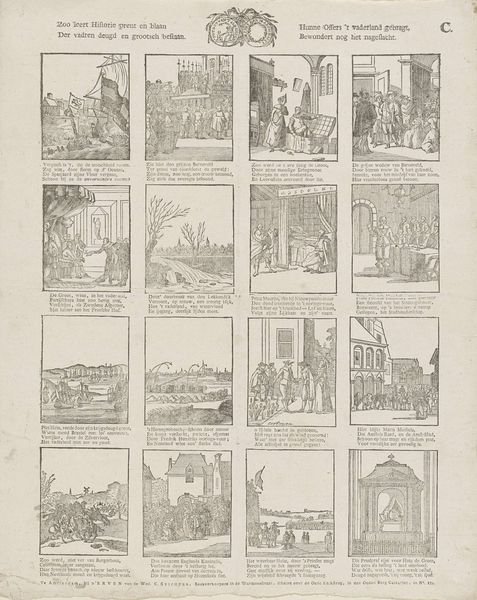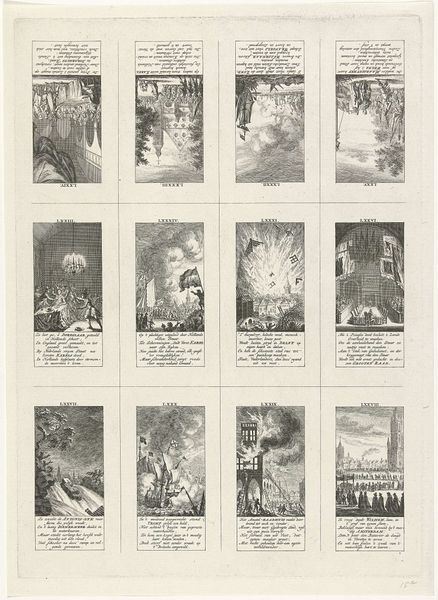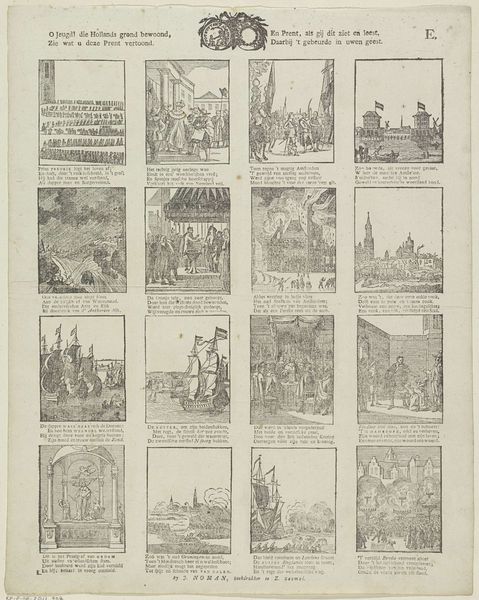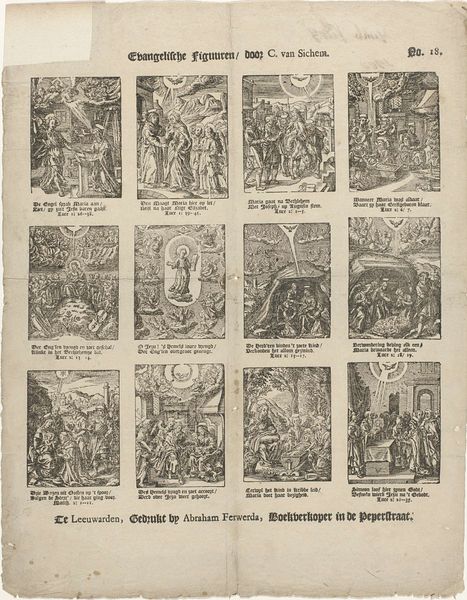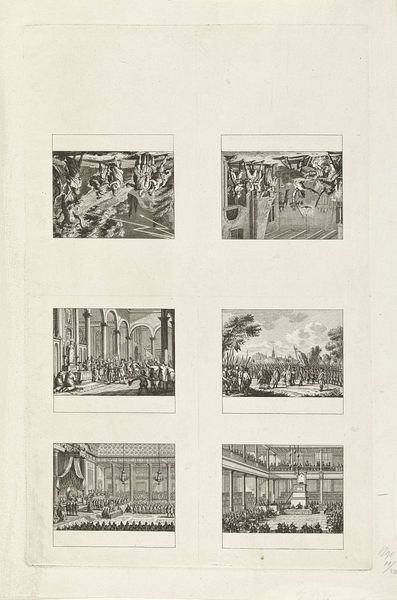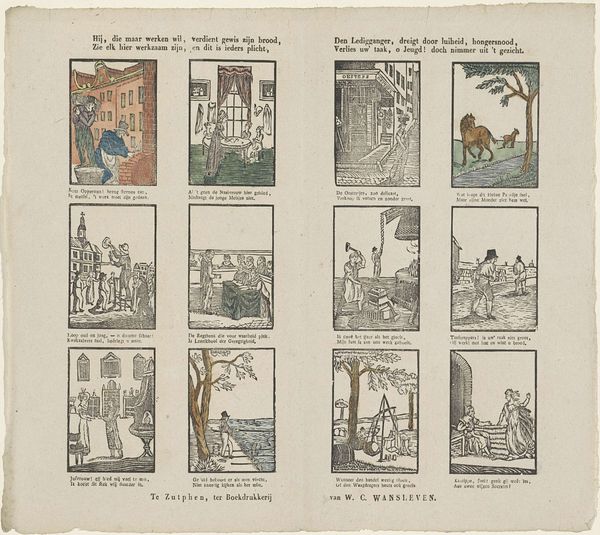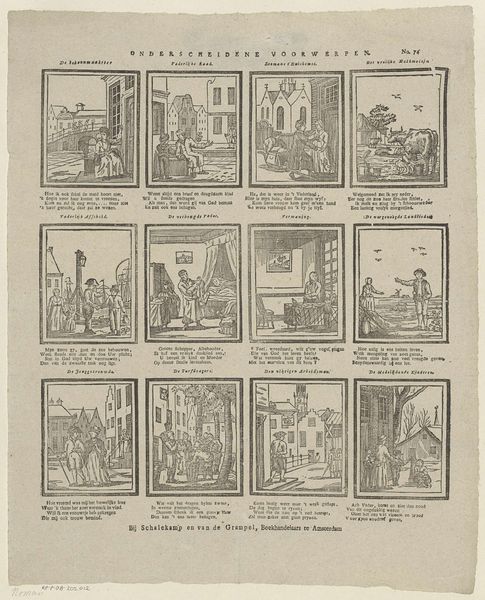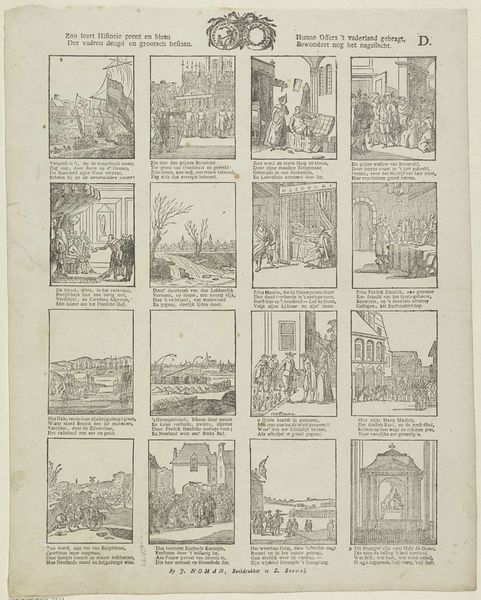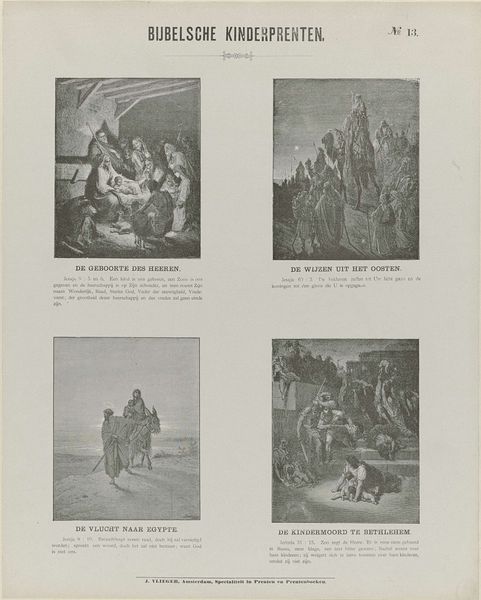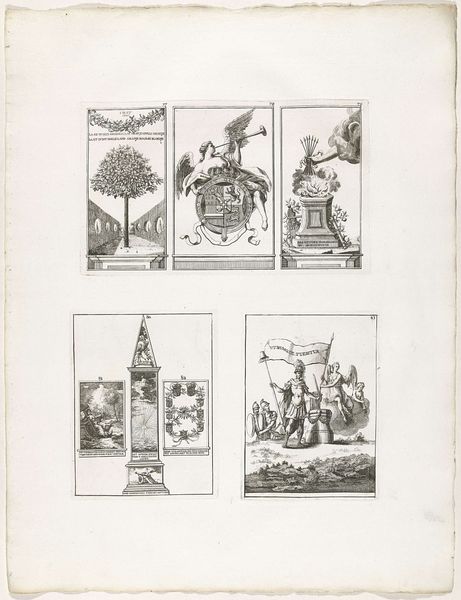
print, engraving, architecture
#
narrative-art
#
dutch-golden-age
# print
#
old engraving style
#
cityscape
#
history-painting
#
engraving
#
architecture
Dimensions: height 327 mm, width 247 mm
Copyright: Rijks Museum: Open Domain
Curator: Let’s consider this intriguing series of prints by Simon Fokke, titled "Twelve Episodes from the National History," created between 1722 and 1784. The collection resides here at the Rijksmuseum. What strikes you first about this sheet? Editor: The sheer density of information packed into these small frames! There’s a rather melancholic feel too; the fine lines and monochrome create a sense of historical distance and quiet contemplation. Curator: Absolutely. Fokke worked meticulously, primarily using engraving to create these narrative scenes. You can practically feel the labor involved in incising these details onto the metal plate, considering it must have been printed for popular consumption. Editor: I see potent symbols interwoven throughout: cityscapes as testaments to civic pride, stately buildings embodying power, crowds of people signifying either celebration or perhaps upheaval, their meanings deeply embedded within the collective memory of the Dutch. What specific historical moments are depicted? Curator: Each episode recounts a different moment in Dutch history. I am struck by the inclusion of the captioning with the Dutch phrases—which may have aided a larger audience in comprehending the history portrayed, rather than simply the well-educated. How are the stories contextualized, considering the scale of production of this print? Editor: These vignettes are carefully constructed, not just to illustrate events, but to evoke specific emotions and ideologies tied to them. Consider the deliberate placement of light and shadow; perhaps emphasizing moral clarity amidst turbulent times for the Netherlands. There is clearly an interest here in codifying a particular historical narrative. Curator: Indeed. The reproducibility and wide availability of prints played a pivotal role in disseminating political messages and solidifying a shared sense of national identity. Consider how this piece operates as a kind of propaganda. Editor: Propaganda, memory, identity... They coalesce in this singular work. The very act of replication, and then mass dissemination, suggests a yearning to inscribe shared values onto the population. I now find myself reflecting on what these enduring symbols might communicate today, to whom, and what new meanings might emerge. Curator: Yes, looking at the history of production and circulation enriches how we look at it now as modern viewers.
Comments
No comments
Be the first to comment and join the conversation on the ultimate creative platform.
